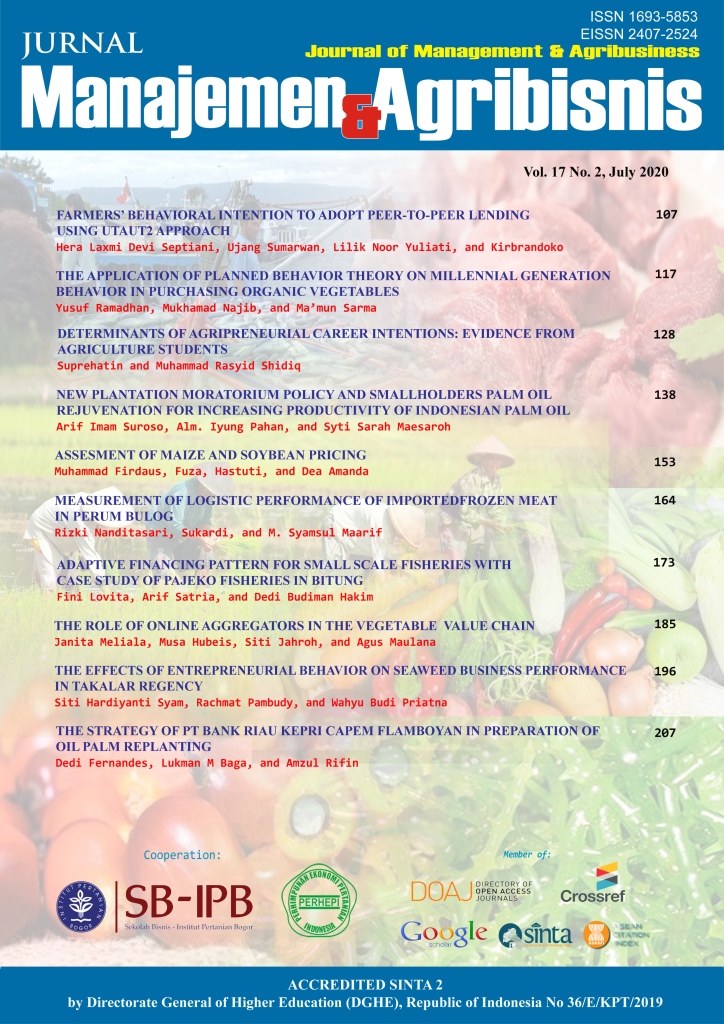Adaptive Financing Pattern for Small Scale Fisheries with Case Study of Pajeko Fisheries in Bitung
Abstract
he agriculture, forestry, and fisheries sectors have a share of 22.05% with 4.21% growth in North Sulawesi. The fisheries sub-sector dominates by 30%. The disbursement of banking institutions' credit for the sector increased by 35% in 2015-2017 but absorbs only 7% of total loans disbursed. The reluctance of formal financial institutions to provide credit to improve small fisheries has increased in non-formal financing. This study identifies factors influencing financing sources choice, comparison of bank and non-bank financing sources, and recommend adaptive financing patterns for small fisheries. Based on descriptive qualitative analysis of in-depth interviews with 32 respondents from 85 Pajeko fishers (mini purse seine) in the Bitung Oceanic Fishing Port (PPS), concluded that 97% of Pajeko fishers in Bitung chose non-bank to finance their operation with determinant factors of financial source: (i) easiness administration (88%), (ii) payment flexibility (78%), and (iii) collateral (69%). The result of comparison simulation shows that boat owner financing with profit sharing for three (boat, boat owner, crews) is the most profitable for the boat owner, while bank loan financing with profit sharing for two (boat owner, crews) is the most profitable for crews. Accordingly, an adaptive financing strategy development is recommended for banking institutions based on influencing factors of fisher’s choices and Pajeko fisher’s characteristics-based approach.
Keywords: Pajeko fishery, resource of financing, bank financing source, non-bank financing source, adaptive financing
Authors
Authors who publish with this journal agree to the following terms:
- Authors retain copyright and grant the journal right of first publication with the work simultaneously licensed under a Creative Commons Attribution License that allows others to share the work with an acknowledgement of the work's authorship and initial publication in this journal.
- Authors are able to enter into separate, additional contractual arrangements for the non-exclusive distribution of the journal's published version of the work (e.g., post it to an institutional repository or publish it in a book), with an acknowledgement of its initial publication in this journal.
- Authors are permitted and encouraged to post their work online (e.g., in institutional repositories or on their website) prior to and during the submission process, as it can lead to productive exchanges, as well as earlier and greater citation of published work (See The Effect of Open Access).

